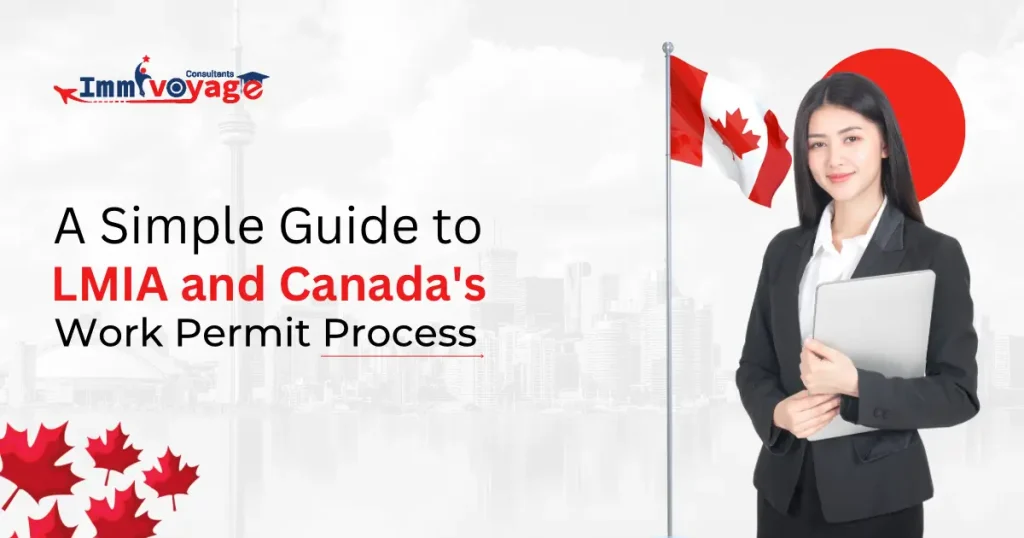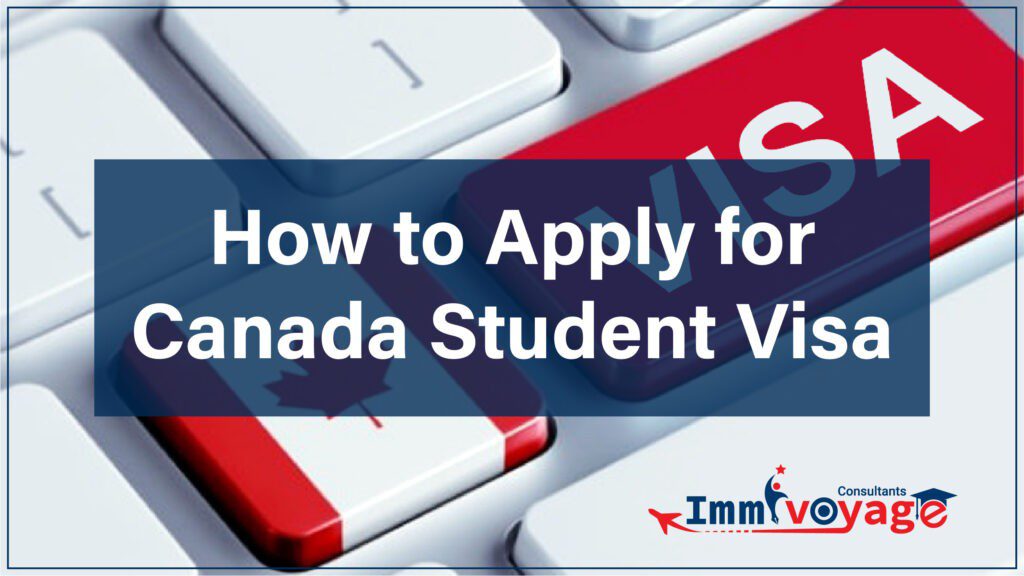If you have experience in a particular field and want to work in Canada, then you must know about the LMIA.
LMIA, which stands for Labour Market Impact Assessment, is a type of document that verifies and protects foreign workers’ employment in Canada.
This document is needed by an employer before hiring any foreign worker to prove that there are no Canadian citizens or residents available that are qualified for the particular job.
However, navigating the LMIA and work permit process can be tricky, but with the right guidance, it doesn’t have to be. From the blog, let us find out more about LMIA and Canada’s LMIA work permit process.
What is an LMIA in Canada?
LMIA (Labour Market Impact Assessment) is a document that allows Canadian employers to hire foreign/international workers. It proves that hiring an international candidate won’t negatively affect Canadian workers.
The ESDC (Employment and Social Development Canada) reviews the LMIA applications submitted by potential employers who want to hire foreign workers.
Through this process, the ESDC determines that hiring foreign nationals in the specified occupation will have a positive or neutral impact on the Canadian labor market.
Now, when the ESDC sends the employers a positive LMIA, it specifies that they can hire a foreign worker for a specified job. And in case a negative LMIA is issued, it means that the employer is not approved to hire a foreign worker.
One thing to note here is that a positive LMIA is only valid for 6 months from its issue date, and the employers must notify foreign nationals about the same.
What is High-Wage or Low-Wage LMIA?
There are two main categories of jobs under which the foreign workers are considered for the LMIA process. These are high-wage and low-wage job positions.
- High-wage job positions are often the ones that pay you higher than the median wage as published by the Canadian government. The high-wage job positions also require the candidates to have a higher level of experience and related skills.
- Low-wage positions, on the other hand, refer to job positions that pay wages lower than the median wages.
For any job position under the LMIA process, the impact of hiring potential foreign workers is assessed. The LMIA ensures that it assesses what impact hiring a foreign candidate will have on the Canadian labor market.
Who Needs an LMIA?
Most people who want to work in Canada need their employer to get an LMIA first. This means their employer first needs to acquire a positive LMIA before the employees can apply for their work permit.
But before you start applying for it, you need to determine if you need an LMIA or not. These are the exempted positions that don’t need an LMIA:
- International Agreements: Like the Canada-United States-Mexico Agreement (CUSMA), which lets people from these countries work in certain jobs without an LMIA.
- Canadian Interests: This includes things like transfers within the same company, highly specialized workers who bring significant benefits to Canada, and some charity or religious workers.
- Reciprocal Employment: Programs like International Experience Canada (IEC) that let young people get international work experience.
- Post-Graduation Work Permits: If you graduated from a Canadian school, you might get an open work permit that doesn’t need an LMIA.
For the full list of LMIA exemption codes, you can go to this website.
And if none of these apply to you, then your employer will need to get a positive LMIA for you.
How Can I Get the LMIA Work Permit?
Anyone would want to get a Canadian work visa for Indians and settle there in the future. But this common question is always there: “How can I get the LMIA work permit?”
Well, not anymore because in this section, we’ll answer this question from both the employer side and the employee side, so that no one has any doubts.
Let us understand how you can get the LMIA work permit by following these easy steps:
LMIA Process for Employers
For Canadian employers, the LMIA application involves a bit of paperwork and waiting before hiring any international talent. Here’s an overview of the steps that you need to follow:
- Determine the Need: The employer must that he genuinely needs to hire a foreign worker because there are no qualified Canadian citizens or permanent residents available for the job.
- Try to Hire Locally First: This is a critical step. Employers must advertise the job opening extensively to Canadians and Permanent Residents for at least four consecutive weeks prior to applying for an LMIA. The advertisements must meet specific ESDC requirements (e.g., on Job Bank, and at least two other national or provincial recruitment methods). This proves they’ve tried to find local talent.
- Make a Job Offer: Once a suitable foreign national is identified, the employer must provide a formal job offer.
- Prepare the Paperwork: The employer fills out the LMIA application form and gathers all required supporting documents, including proof of business legitimacy, recruitment efforts, the offer of employment, and detailed wage information.
- Submit the Application: After that, submit the complete LMIA application package to ESDC/Service Canada. The employer is then required to pay the processing fees, which is $1,000 CAD per LMIA application, which the employer cannot recover from the worker.
- Wait for Review: ESDC reviews the application. They may contact the employer for an interview, request additional documentation, or conduct site visits to verify information. They’re checking if the job offer is real, if the employer tried hard enough to hire locally, and whether hiring a foreign worker will impact the Canadian job market.
- Get the Decision
- Positive LMIA: If approved, ESDC issues a positive LMIA letter, which includes a unique LMIA number. This letter is then given to the foreign worker.
- Negative LMIA: If the application is denied, ESDC will provide reasons for the refusal.
- Withdrawn: The employer can withdraw the application at any point.
The processing time for an LMIA can vary, from a few weeks to several months, depending on the stream, volume of applications, and completeness of the submission.
Work Permit Process for Workers
After your employer has secured a positive LMIA and provided you with their official job offer, it’s your turn to do the rest of the work. Here’s the Canada work permit process for you as a foreign worker:
1. Receive Your Documents: Your employer will provide you with a copy of the positive LMIA letter (including the LMIA number) and your official, detailed job offer. Make sure that all details match each other and there are no mistakes.
2. Gather Your Personal Documents: Collect all the documents that you’ll need for further processing. This typically includes:
- Your valid passport
- Educational credentials (degrees, diplomas, transcripts)
- Work experience letters/résumé
- Any professional licenses or certifications required for your job in Canada
- Proof of funds (to support yourself upon arrival, though often less critical for LMIA-based work permits)
- Digital photo
- Marriage certificate/birth certificates if applying with family
- Medical exam (if required for your country of origin or profession. It’s often advisable to do this upfront to avoid delays.)
- Police clearance certificates (if required, depending on your nationality and previous residences).
3. Complete the Work Permit Application: You’ll typically apply online through the Immigration, Refugees and Citizenship Canada (IRCC) portal. Make sure to fill out the work permit application form accurately and honestly.
4. Pay Fees: Pay the work permit processing fee (currently $155 CAD) and the open work permit holder fee (if applicable, for spouses) online.
5. Biometrics: After submitting your application, you’ll receive instructions to provide your biometrics (fingerprints and photo) at a designated Service Canada or VAC (Visa Application Centre) office in your country. This usually needs to be done within 30 days.
6. Wait for a Decision: IRCC will review your application. Processing times vary widely based on your country of origin and the volume of applications.
7. Receive Approval (Port of Entry Letter): If your application is approved, you’ll receive an approval letter (often called a Port of Entry Letter or “Letter of Introduction”) in your IRCC online account. This letter is not your work permit, but it allows you to travel to Canada.
8. Travel to Canada and Get Your Work Permit: Upon arrival at a Canadian Port of Entry (airport or land border), present your approval letter, passport, and all supporting documents to a Border Services Officer. They will verify your information and, if all is in order, issue your physical work permit.
Important Tips and Things to Watch Out For
Now that you’re fully prepared to apply for LMIA, whether as an employer or an employee, there are a few things that you should keep in mind and always follow:
- Watch Out for Scams: Unfortunately, there are many immigration agencies that are taking advantage of people. So, make sure to never pay an employer for an LMIA fee (it’s illegal for them to ask you to). Be wary of job offers that seem too good to be true or anyone asking for payments for “guaranteed” jobs or LMIAs. Real employers won’t ask for money for the LMIA process.
- Get Everything Right: Ensure all information on your LMIA, job offer, and work permit application is perfectly consistent. Any mismatch in the information can lead to delays or refusal.
- Keep Everything Documented: Keep copies of everything. Every email, every document, every receipt.
- Get Professional Help if Needed: If you find the process overwhelming, consider consulting a Regulated Canadian Immigration Consultant (RCIC) or an immigration lawyer. They can guide you throughout the process and ensure your application is complete properly.
- Stay Updated With the Latest News: Immigration policies can change. Always refer to the official IRCC and ESDC websites for the most current information, especially for a simple guide to LMIA Canada 2025.
Frequently Asked Questions (FAQs) for LMIA Canada
You might have some common questions regarding the LMIA application process, its fees, required documents, and other related matters. Let us decode some of the frequently asked questions when applying for an LMIA.
1. Who Can Apply for an LMIA in Canada?
Employers in Canada can apply for an LMIA to hire foreign workers when they are unable to fill job positions with suitable Canadian candidates. The foreign workers also require the LMIA document to obtain a work permit in the country.
2. What Are the Types of LMIA?
There are various types of LMIA other than the high-wage and low-wage. These are:
- LMIA for Agricultural Worker
- LMIA for Caregiver
- Temporary Foreign Academic
- Dual Intent LMIA (Express Entry)
- Temporary Foreign Worker through Global Talent Stream
3. How Much Does the LMIA Work Permit Cost in Canada?
Generally, if a company applies for an LMIA, they are to pay $1000 per application. There can be exceptions where employers may pay less, but this depends on the salary of the position and the immigration program.
4. Does LMI Guarantee PR?
The LMI does not guarantee PR but can help to increase your chances of immigration to Canada. It also helps in increasing your points and gives you an advantage in the Provincial Nominee Skilled Worker stream.
5. What Documents Are Required for an LMIA Work Permit in Canada?
The documents required for an LMIA work permit in Canada are:
- A copy of the employment offers and LMIA
- Proofs that showcase you meet all the requirements of the job being offered. These proofs include education, relevant work experience, and language skills.
- Your Photographs and applicable fees
Conclusion
An LMIA is a great way to hire the right talent into the country. It benefits potential foreign workers who are in search of jobs in Canada. We at Immivoyage Consultants team up with Canadian employees to help you get an LMIA work visa.
If you hold a minimum of 2 years of work experience in the beauty, transport, dairy, or IT industry, we can help you get the LMIA Canada work permit with no hassle. Contact us today for further details!



